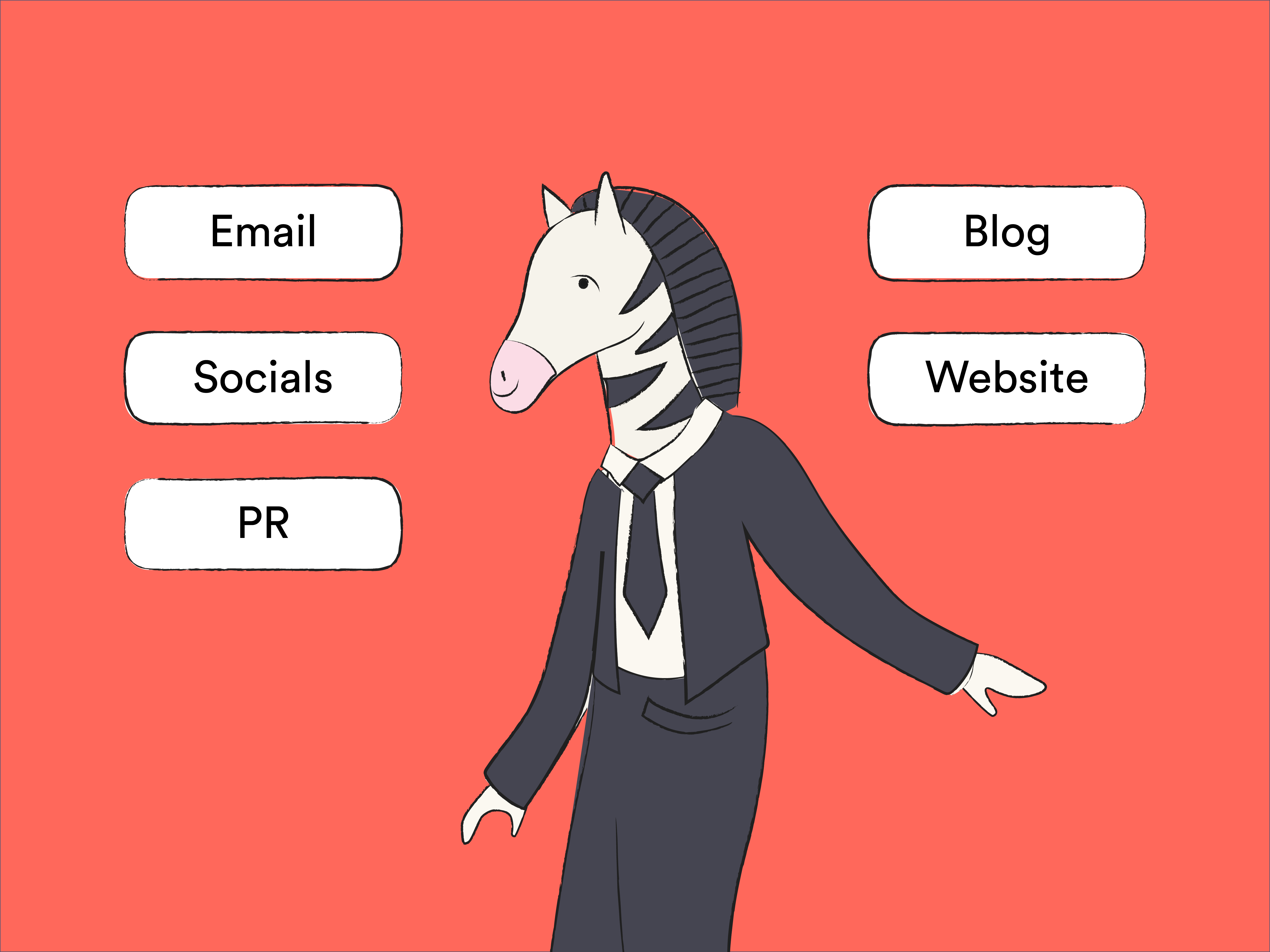Do you know the art of showing, not telling? This is what image marketing is all about. By replacing big paragraphs of text with carefully picked images that represent your company, product, and values, users can see for themselves what they’re missing out on.
This is not to say that words are the enemy, but they are most effective when used alongside imagery that grabs attention, gets people talking, and uses human emotion as a tool to increase sales.
If no one’s reading your content, image marketing could be exactly what you need to add some life into the two-dimensional world. To find out more about what image marketing is, its benefits and if you need it, stay tuned.
What is image marketing?
To start off, let’s talk a bit more about what image marketing actually is. Sure, it involves images, but there’s much more to it than that.
A whopping 91% of users prefer visual content over written content, which has been a consistent trend in human psychology. By supporting their copy with relevant imagery, companies can evoke emotions, something that has been done for thousands of years.
From cave paintings to Instagram product pages, if we resonate with a picture, we process it in a similar way – 60,000 times faster than text. As technology gets more advanced, image marketing has become more fine-tuned and nuanced, with certain techniques in place for best results.

Images need to be chosen wisely to make an impact that leads to a conversion (purchasing a product or service). To know which ones are best for whatever goal, whether it be to drive engagement, spread awareness, or increase sales, it is important to know about the different types of image marketing.
Types of image marketing
There are numerous factors that will influence what images are best for your digital marketing content. But first, you should do some research, beginning right here. Below are some of the most common types of images used in marketing.
Branded graphics
Branded graphics can be anything as long as the company has stamped its brand onto it. Using the same logo, color palette, and style, using imagery such as this throughout social media posts, blogs, and other forms of content will create a cohesive brand image.

They tend to be graphics instead of photography and can be as simple or complicated as you like. It accentuates the copy by driving home a point with a quote, graph, or other visual representation of information.
Graphic design tools such as Canva, with premade templates and high-quality graphics, are popular choices for creating branded graphics and images.
Stock images
Stock images may have a bad rep for being a bit cheesy, but when used right, they can give content a whole new lease of life. It is professionally staged photography that can be of items, situations, or people taking part in a normal activity such as washing their face or having a conversation.

There are many benefits to stock images, including:
- Cost-effective: Subscriptions and memberships can be bought for a small monthly fee that gives access to hundreds of pictures. Companies don’t have to buy photography equipment or spend time setting up shots.
- Varied options: Whatever image you need, there is most likely already a library of stock images that would be the perfect fit.
- Tells a story: Storytelling is an effective way to evoke emotion and make content more memorable.
User-generated content (UGC)
UCG content is what it says on the tin. Those who have purchased your product or used your service are asked to send in their images or videos doing so. It is free and is an incredibly effective marketing strategy. In fact, 85% of people say they find UCG more influential than any other type of content.

After seeing such positive experiences from existing customers, it builds confidence in new ones that they will be just as happy. As well as this, it becomes much easier to see how what you are offering can slot into their life and make it that much better.
What’s more, UGC is authentic and creates a trustworthy reputation for your brand. If others love what you do, why wouldn’t they? This type of image marketing can be used anywhere and is ideal for maintaining positive public relations.
Infographics
You may already know how much we humans love infographics, so much so that those who use infographics increase traffic by up to 12% faster than their counterparts.
Infographics are visual representations of information that have been made much more digestible and enjoyable to learn. There are no big words, paragraphs, or eye strain when it comes to learning complex statistics and facts.

By using a mixture of short, interesting sentences, eye-catching colors, and structural flow, infographics tap into our natural way of processing visual content. They are also much easier to share on social media, which drives engagement and spreads awareness about the cool things your brand is doing.
GIFs
Last but not least, we have GIFs (Graphics Interchange Format). They are moving visuals that play on a short loop and can either be from existing content, such as a movie or animated. GIFs are also great for adding personality to written content and making it more memorable.
GIFs are very easy to make with tools such as Giphy, which provides GIFs with just a quick topic search straight from your keyboard.
Promoting a product through GIFs helps to bring it to life and show it in action. For example, if you’re selling a kitchen tool, showing a GIF of it being used is much better than a series of images.
Finally, GIFs are fantastic for slipping into email marketing efforts like giveaways, fundraising, or promotional products. It instantly grabs attention, says what it needs to say and makes it much more likely the user will engage.

Benefits of image marketing
So you know what it is, but what makes it so great? As well as adding a pop of color to an otherwise barren page, image marketing can be the difference between a struggling company and a thriving one.
1. Grabs attention
First and foremost, you want those who come across your company to be intrigued as soon as possible. Unless you’re a copywriting sensation – this is hard without visual content.
Our attention spans are getting shorter, and with this comes the added challenge of making something worth sticking around for. Using a strong image at the forefront of your content makes it possible to hook a user in and encourage them to stay.
2. Increases reach
You can use search engine optimization (SEO) to rank your website higher in search engine results. One of the ways to do this is with images which are found to attract 90% more views than pages without.
Also, images are universal, no matter what language the recipient understands, they will all experience the same message through visuals alone.
3. Boosts engagement
With more people seeing your content organically, it will likely be shared on social media sites such as LinkedIn, Instagram, and other mobile apps. This is because sites like this are much more visually friendly than written content due to their scrolling design.

To compete for engagement on social platforms, your content must have images worth sharing. Infographics, user-generated content, and branded graphics are the best marketing campaigns to share, as they say a lot without taking up too much digital real estate.
4. More memorable
Suppose you’ve chosen strong imagery that supports your message. In that case, it will naturally evoke feelings from those who see it, making it more memorable than the sea of content with lackluster images or none at all.
5. Increase sales
With all of this positive stuff happening, it can only lead to one thing – an increase in sales. With users feeling more connected to your brand and trusting that it will serve them well, the increased traffic won’t take long to turn into conversions.
In addition to this, as engagement increases and social media spreads your word, people from all over the globe will tune into your message.
Do you need image marketing?
Even companies that are already successful can do even better with image marketing. The truth is, everyone needs it. Your copy may be read beautifully, but you neglect a huge portion of your market without even realizing it.
Whether we admit it or not, our attention span is dwindling, and the need for instant gratification is hard to shake. So do yourself a favor and boost your engagement, reach, and sales with images that accurately showcase why your brand deserves a place in their memory.










